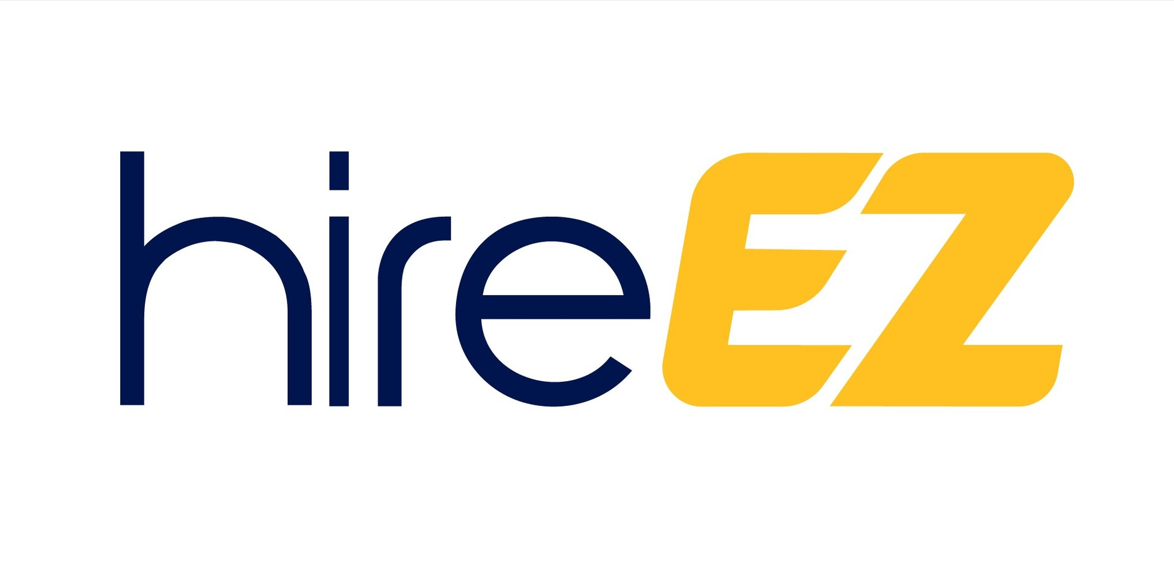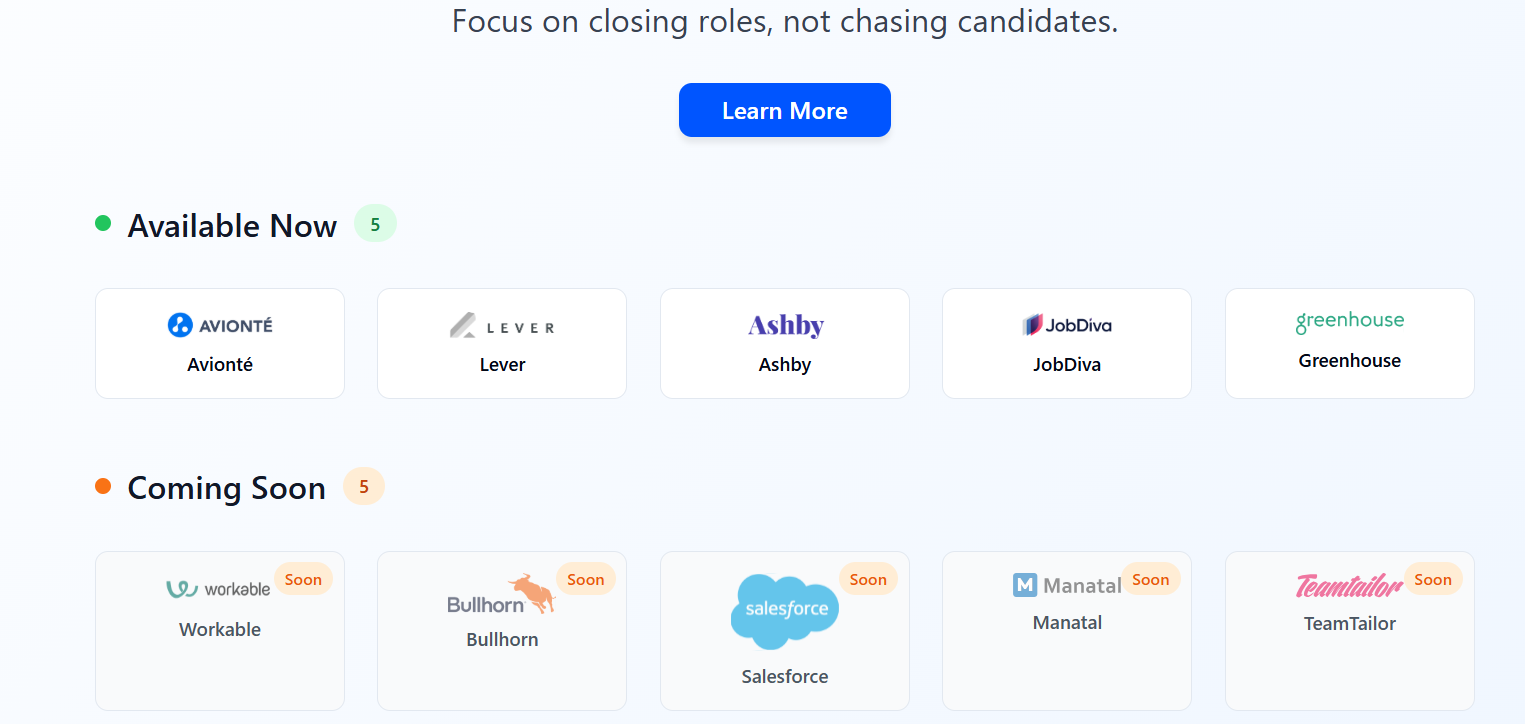How to Find Candidates Who Actually Reply | AI Recruitment Sourcing Tools
Explore the top AI sourcing tools that help recruiters go beyond name-hunting to meaningful engagement. From HeyMilo’s conversational AI and HireEZ’s engagement automation to TurboHire’s fast matching, discover how smart automation and human insight can finally boost your candidate response rates.
.jpg)
Explore the top AI sourcing tools that help recruiters go beyond name-hunting to meaningful engagement. From HeyMilo’s conversational AI and HireEZ’s engagement automation to TurboHire’s fast matching, discover how smart automation and human insight can finally boost your candidate response rates.
Introduction: The Real Sourcing Problem
Finding candidates is easy. Getting replies is not. In today’s hyper-connected hiring landscape, your message is competing with dozens of other recruiters landing in the same inbox. Candidates are receiving outreach on every channel like email, LinkedIn, SMS, even WhatsApp and yet response rates continue to decline.
Why? Because most outreach still feels robotic. Even when powered by automation, it lacks intent, context and authenticity.
This is where AI recruitment sourcing tools are becoming valuable. These platforms shift the focus from gathering a bunch of names and seeing who responds to matching candidate data against behavioural signals and who is most likely to respond. They also help recruiters build conversations, not just pipelines.
In this article, we will explore how these tools work, what to look for when selecting one and which platforms are leading the charge into 2025.
What Is AI Recruitment Sourcing Software?
AI recruitment sourcing tools utilise Artificial Intelligence to automate and improve the early stages of hiring, such as sourcing, and even shortlisting and engagement.
Instead of having your team search for candidates manually and repeating the same outreach to secure an introduction, these systems will analyse candidate data across several sources (LinkedIn, ATS, the open web) and suggest candidates that meet your role and are more likely to respond.
They also help you:
- Rediscover past applicants buried in your ATS
- Automate outreach sequences across multiple channels
- Personalise engagement using language models.
- Rank candidates by response probability or role fit
In short, they are designed to give recruiters their time back by surfacing ready-to-engage talent instead of endless lists of profiles.
What to Look for in an AI Sourcing Tool
Before you pick any software, it is important to define what makes one effective. Here are five key evaluation points to separate tools that simply find names from those that help you get replies.
1. Breadth
Does it search across multiple databases such as your ATS, social platforms and the open web?
2. Depth
Can it recognise intent and related skills beyond keywords (for example, “React developer” also finds “JavaScript engineer”)?
3. Engagement
Does it help personalise outreach and reach candidates via multiple channels (email, SMS, InMail)?
4. Usability
Is it easy to adopt without disrupting your recruiting workflow?
5. ATS Compatibility
Does it fit nicely with your current tools or applicant tracking system?
These are the aspects you should use as a checklist when assessing the options provided below.
The Best AI Recruitment Sourcing Tools of 2025
Below is a curated list of five top AI recruitment sourcing tools that excel at finding, engaging and converting candidates who will respond.
HireEZ
Best for: Rediscovering ATS Talent and Multi-Channel Engagement

Overview:
HireEZ combines deep sourcing capabilities with automation to help recruiters find and re-engage talent efficiently. Its AI engine searches the open web, internal databases and your ATS using semantic search to match skills and experience rather than exact titles.
Key Features:
- Rediscovery of ATS and CRM data
- AI-powered Boolean and semantic search
- Multi-channel outreach (email, InMail)
- Campaign tracking for open and reply rates
Integrations: Greenhouse, Lever, Outlook, Gmail, Workday
Ideal For: Enterprise recruiting teams and agencies managing large-scale and continuous sourcing needs.
HeyMilo
Best for: AI-Driven Engagement and Autonomous Sourcing

Overview:
HeyMilo takes sourcing automation to the next level with agentic AI. Recruiters can type natural-language prompts like “Find senior UX designers in Berlin with Figma and user research experience.”
HeyMilo’s AI assistant scans multiple data sources (ATS, internal talent pools and public web) and even runs first-round outreach or screenings automatically.
The “Source Candidates” menu displays intuitive sourcing options within HeyMilo.

“From Here” displays how to search and manage internal candidates.
“From Outside” highlights advanced filters and smart cost preview for external sourcing.
“From ATS” demonstrates direct integration with your existing ATS database.

Key Features:
- Conversational AI search interface
- End-to-end AI recruiter not just for sourcing
- Candidate intent scoring
- Smart cost preview for external sourcing
Integrations: Greenhouse, Ashby, Salesforce, Teamtailor, Avionté, Bullhorn ATS and many more
Ideal For: Staffing firms or high-volume hiring teams needing scalable sourcing, engagement and screening.
Fetcher
Best for: Blending AI Automation with Human Review

Overview:
Fetcher balances automation with human quality control. The AI aligns job descriptions with the profiles of candidates and afterwards, Fetcher’s human reviewers validate and edit the matches for accuracy and cultural fit.
Once validated, Fetcher automates email sequences and monitors engagement metrics so you can identify who is engaged and how to improve your messaging.
Key Features:
- AI + human hybrid sourcing workflow
- Outreach automation with analytics dashboard
- Candidate diversity tagging
- Performance tracking (open/reply rates)
Integrations: Gmail, Outlook, Greenhouse
Ideal For: Small to mid-sized in-house recruiting teams or startups seeking speed without sacrificing quality.
SeekOut
Best for: Diversity Sourcing and Deep Data Insights

Overview:
SeekOut offers one of the most comprehensive candidate databases on the market with hundreds of millions of profiles enriched with skills, experience and diversity data.
It is known for powerful Boolean and “power filters” that help you find underrepresented or hard-to-find talent. With semantic search, it also identifies related roles and adjacent skills.
Key Features:
- Diversity-focused candidate search
- Talent analytics and workforce planning tools
- Internal rediscovery within your ATS
- Deep Boolean and AI-assisted search capabilities
Integrations: Workday, Lever, SmartRecruiters, Greenhouse
Ideal For: Enterprise HR teams focused on strategic, data-driven and inclusive hiring.
TurboHire
Best for: Speed and End-to-End Sourcing Workflows

Overview:
TurboHire integrates various data sources like job boards, internal resumes and public access sites to create ongoing pipelines of candidates. Its AI engine scores job-fit for candidates and automatically shortlists the best fits for the position.
For teams operating at scale, TurboHire’s workflow management tools allow smooth movement of candidates from sourcing directly into screening and interviewing.
Key Features:
- End-to-end recruitment automation
- Candidate scoring and ranking
- Bulk uploads and workflow pipelines
- Collaboration tools for recruiting teams
Integrations: BambooHR, Zoho Recruit, Outlook
Ideal For: In-house recruiting teams handling multiple roles simultaneously and needing fast unified talent workflows.
Comparison Table: How They Stack Up
(Pricing as of 2025; may vary by plan and team size and usage.)
How We Selected These Tools
To create this shortlist, we evaluated over a dozen AI sourcing platforms based on five core dimensions:
Sourcing Breadth: Coverage across ATS, social and public web
Candidate Engagement: Personalisation and automation of outreach
Ease of Use: Learning curve and recruiter adoption
Integrations: Popular ATS and HR systems
Value for Money: Features relative to pricing
All solutions showcased meet at least two of the areas above and have proven feedback from users regarding candidate engagement and recruiter productivity.
Other AI Recruitment Sourcing Tools Worth Mentioning
If you are exploring alternatives beyond the main list, here are a few more platforms worth testing:
- Loxo: CRM + sourcing automation for smaller teams
- AmazingHiring: Specialised sourcing for IT and tech talent
- Arya: Predictive AI sourcing for diversity hiring
- HireVue Discover: Video interview insights + sourcing integration
Frequently Asked Questions (FAQs)
1. How are AI sourcing tools different from manual sourcing?
Traditional sourcing often entails a lot of manual searching and repeatedly filtering through the results, while AI sourcing tools will automate this by conducting simultaneous searches across many different platforms and sorting through candidates based on fit and engagement.
2. Will AI sourcing tools replace recruiters?
No, these tools are designed to improve the efficiency of recruiters. While they spend time on traditional search processes (such as searching for and communicating with candidates), the AI performs the repetitive searching and outreach step so the recruiter can focus on strategy, relationships and decision-making.
3. Can these tools actually improve candidate reply rates?
Yes, and when you combine it with personalized messaging through multi-channel outreach, it becomes even more powerful. AI tools can help you access the right people. How you communicate and message is still the most important in improving candidate reply rates.
4. Are these platforms secure in handling data?
The majority of the top providers are compliant with GDPR and SOC 2. Even though many providers are compliant, always check and note their compliance before adding them to your workflow.
5. What tool is best for startups or small teams?
Fetcher or TurboHire would be a good fit for any startup and/or small team because they both have low-cost entry plans and easy onboarding for a small recruitment team.
Final Thoughts: Sourcing That Gets Replies
The real power lies in using automation to reach people faster, understand their intent and create space for meaningful interaction. AI recruitment sourcing tools are a great start.
If you are struggling with low reply rates, start by asking:
- Are you sourcing candidates who are likely to respond?
- Is your outreach message personal, relevant and empathetic?
- Are you engaging across multiple channels?
Smart sourcing improves response rates when you combine automation with human understanding.
Platforms such as HireEZ, HeyMilo, Fetcher, SeekOut and TurboHire allow recruiters to spend less time sourcing and more time speaking to candidates who are more likely to say yes.
Yes, when it comes to interviews, we utilize an active proctoring layer, an AI-classifier, and more to detect cheating. We provide a trust score that indicates the likelihood of cheating.
Candidates are appreciating the ability to go beyond their resume and interview in a more interactive/adaptive manner compared to one way video interview software. We also have an average candidate satisfaction score of 4.6/5 - which highlights HeyMilo's conversational AI.
Questions can be configured with an objective evaluation criteria - so candidates are evaluated the way your recruiting team currently evaluates candidates.We additionally run 3rd party bias audit checks so with HeyMilo, you're leveraging ethical AI.





.webp)



